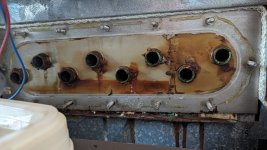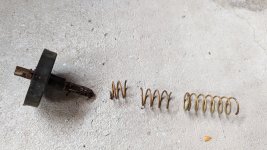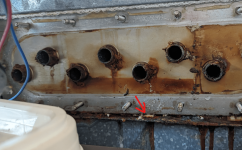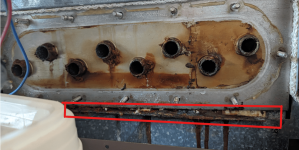- Aug 16, 2022
- 80
- Pool Size
- 22000
- Surface
- Vinyl
- Chlorine
- Salt Water Generator
- SWG Type
- Zodiac LM3-24
Hello, I had a new Hayward H250ED2C installed in 2019. The HX leaked in 2020 and was replaced at cost by Hayward. No warranty as they claimed that this was a "water chemistry" issue. I firmly deny that claim as I am a Type A person who is meticulous about my pool chemistry. I have a full Taylor kit and do not reply on test strips. I have pulled the header off the heater today after closing the pool for the winter and found that the spring and rod for the internal bypass valve are damaged. The spring is in 3 pieces and the rod is only about two inches long. I also note that the inlet and outlet tubes for the HX seem to be corroded more than I would have expected for only 3 seasons of use. See attached pics.
I am quite sure that Hayward will once again blame poor chemistry but my feelings on that are above. My question then is two fold and wonder if either of these would be likely issues for this:
1 - No Check Valve between Heater outlet and SWG?
2 - Lack of equipment bonding as no bonding was installed when the pool was built in 2003?

I am quite sure that Hayward will once again blame poor chemistry but my feelings on that are above. My question then is two fold and wonder if either of these would be likely issues for this:
1 - No Check Valve between Heater outlet and SWG?
2 - Lack of equipment bonding as no bonding was installed when the pool was built in 2003?





